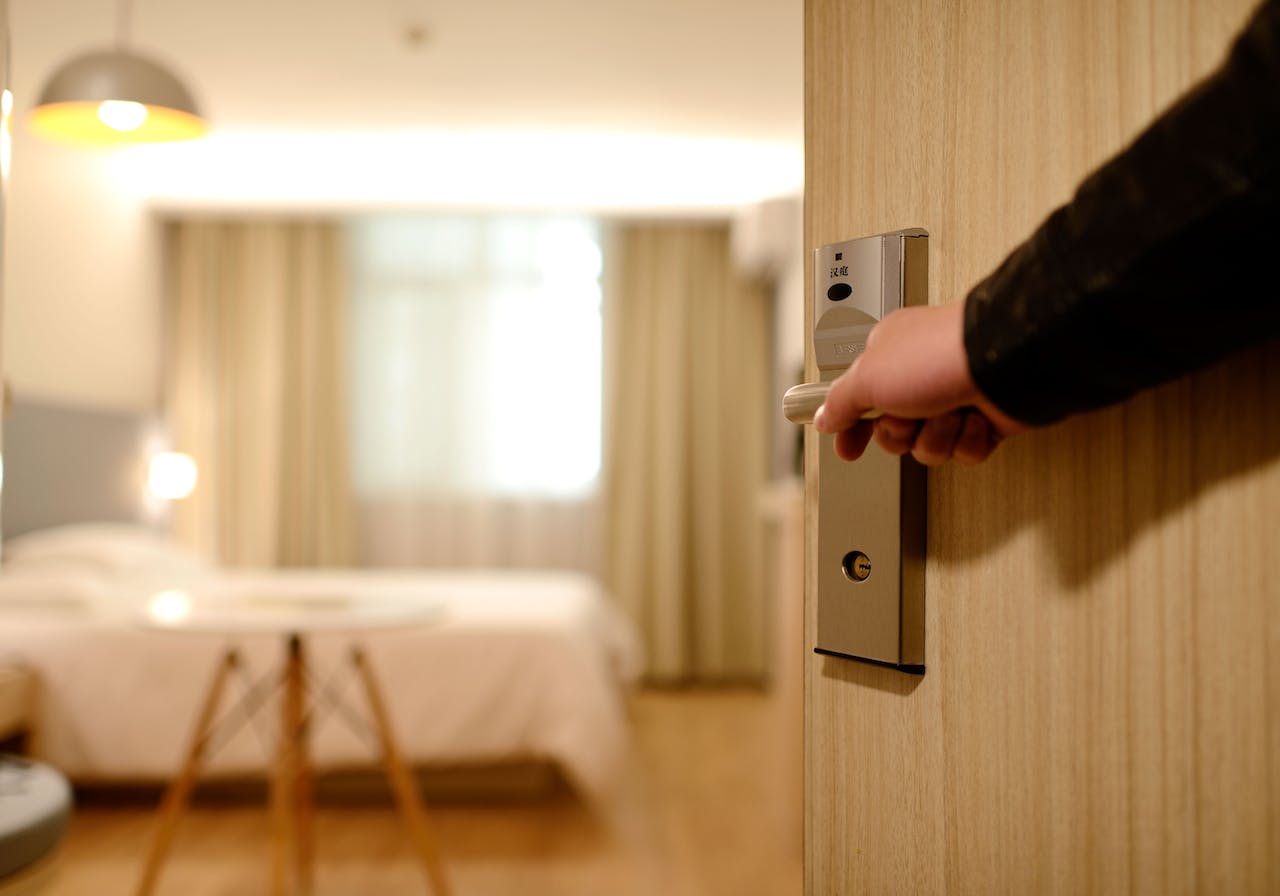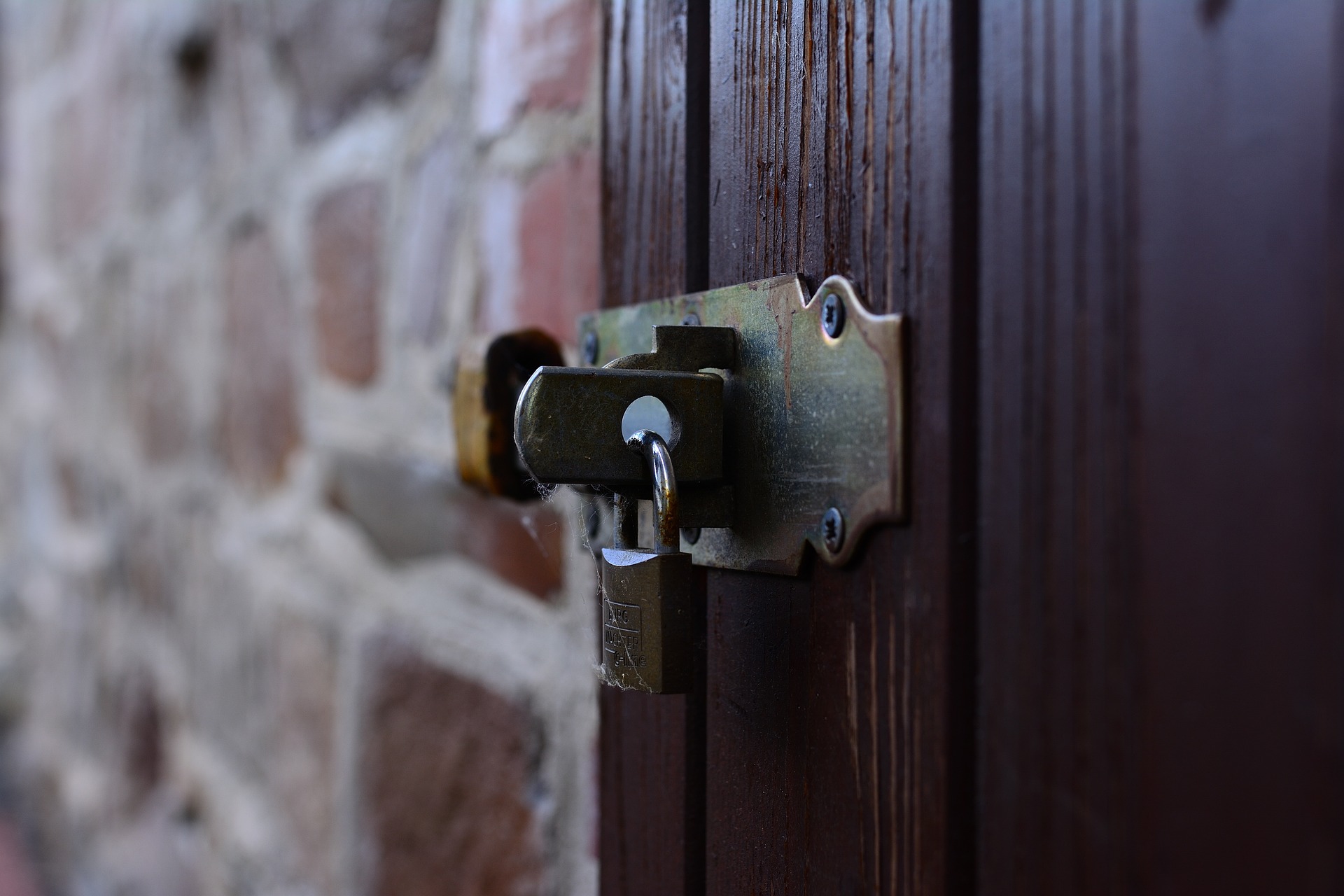What Are The Different Types Of uPVC Door Hinges?
It’s easy to assume that all door types have the same hinges — but in reality, this isn’t the case. In fact, when it comes to uPVC doors, there are three main hinge types. These small pieces of door furniture may seem insignificant but knowing the difference between these uPVC door hinge types can help you identify and correctly care for your current door. It will also help you choose the correct hinges when it comes to replacing your uPVC door.
So, what should you be looking for? Let’s explore the three main uPVC door hinge types and their benefits.

What are the different types of door hinges on a uPVC door?
First up, what are the different types of hinges you can expect to see on a good-quality uPVC door?
Butt hinges
Butt hinges are fitted to a door’s edge (the ‘butt’). They are common on both new and old doors, and there are three main types.
Plain butt hinges consist of just the hinge itself, with no extra parts to contend with. They are usually used for internal uPVC doors because they’re better suited to lightweight doors, which don’t need additions to help remove friction.
Spring-loaded butt hinges are typically used for sliding doors, because they force the door to close again instead of remaining open.
Finally, ball-bearing butt hinges contain a greased ball-bearing instead of a pin to reduce friction. These hinges are perfect for heavy uPVC doors that are in frequent use.
Butt hinges are popular because they’re strong and durable, and great for home doors because once installed they are less visible than flag hinges. They are also widely available in a range of sizes and thicknesses, making it easy to get hold of what you need to replace them.
However, they do have a limited range of motion, which isn’t an issue for most typical household doors but does restrict their use in other situations.
Rebated hinges
Rebated, or Eurogroove, hinges are similar in design to butt hinges. However, these uPVC door hinges sit inside a ‘rebate’ or groove in the frame.
These hinges are very compact and less visible when the door is closed than other types, and the snug fit they enable results in better draft exclusion.
It’s worth noting that, because they are so specialised, they aren’t commonly found anymore. Most door companies are aware that people prefer hinges they can adjust, fix and replace themselves.
Flag hinges
Flag hinges, also known as lift-off hinges or double-acting hinges, are fitted to the side of the door instead of the butt. They have become popular in recent years and are incredibly versatile, even able to rotate a full 360 degrees.
The main benefit of flag hinges is that they are adjustable all ways; you can move them up and down or side to side, to perfectly fit your door jamb. There is also a huge range available.
Flag hinges aren’t as strong as butt hinges and they’re generally unable to support heavy doors. As a result, they are best suited to internal uPVC doors.
How many hinges should a uPVC door have?
uPVC doors tend to have two or three hinges, but a variety of factors contribute to how many hinges your door should have.
Firstly, how secure does your door need to be? External doors like French doors, and internal ones in some cases, usually have more hinges because this makes the door more difficult to force.
Secondly, how heavy is the door, and how frequently will it be used? In most cases, the manufacturer will state the load capacity of each hinge. But as a general rule, heavier doors or ones you will frequently use will need three hinges. In contrast, two might be enough for smaller, lighter or less frequently used doors.

How to adjust your uPVC door hinges
Is your uPVC door sticking or scraping when you open or close it? Has it been letting in draft? If you’ve noticed any of these issues, it could be worth adjusting your door hinges. Over time and with frequent use, uPVC doors can slip or become loose and not fit as snugly as they did when new.
How can you tell if this is the case?
Examine around the edges of the door
Are the corners of the door in line with the door frame’s corners? Are the gaps at the sides consistent all the way along, or wider at one end?
If the gaps that have appeared are consistent with the door having slipped, then adjusting the hinges should get it back to normal. If the door meets at the top and bottom but not at the sides, your door may have warped, which means it will need to be replaced.
Adjusting your door hinges
To adjust your uPVC door hinges, first put something like a magazine or thin block of wood underneath the door to support it, then remove the pins from your hinges. Tighten all the screws, as this can be a quick fix to bring your door back into alignment.
To adjust a butt hinge, remove the cap and expose the Allen key screw, which can then be used to move the hinge up or down. Some hinges will also have Phillips screws on the sides, which you can adjust to move the hinges laterally.
To adjust a flag hinge, you may need to spend time locating the screw first, as they may be hidden behind a plastic cap. Once you’ve located them, there is usually a screw at the top of the hinge to adjust it up or down, one at the side to adjust it laterally, and one at the bottom to adjust the compression. Try a couple of Allen key rotations in the direction you need to test the outcome and carry on until you’re happy with the adjustment.
A guide to replacing uPVC door hinges
If a hinge on your uPVC door breaks, it’s best to replace them all at the same time to ensure even wear.
As with adjusting, the first step to replace your uPVC door hinges is to put something underneath your door to catch it when you remove the current hinges. Anything that’s the right height to not damage the door when it drops will do.
Now, mark the top, bottom and mid-point of each of your current hinges in pencil, both on the door and the frame, to keep the positioning of the new hinges similar. Remove the pins, and carefully lift the door away to a safe location.
Next, remove the hinge parts from the door frame, and align the new parts so their mid-point is the same as the midpoint of the old part you marked earlier. Mark where you need to drill holes to screw the new parts in place, then drill the holes and attach the new parts.
To attach the new hinge parts to the door itself, you can use the midpoints as before for a fairly reliable guide. You can also stand the door in the frame and confirm where the hinge part will need to go to match up with its counterpart on the frame, but make sure the door is well-supported when you do this.
Once you’re sure of the positioning, drill the holes and attach the hinges as before, then put the door into place.
High-quality uPVC doors from Flying Doors
At Flying Doors, we’re committed to high-quality and affordable uPVC doors. We work with you to customise the design of your new doors to meet your needs. We’re also proud to manufacture all our doors in the UK, ensuring the highest standards. In fact, we’re so confident we offer a 10-year guarantee for ultimate peace of mind.
To get started with a quote for your brand-new doors, take a look at our door options and use our handy ‘build your own’ tool to customise them to meet your exact needs. Any questions? Feel free to contact our friendly and knowledgeable team.